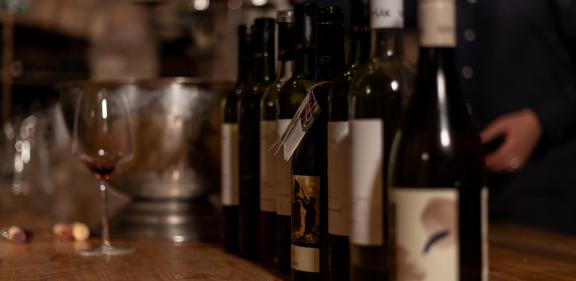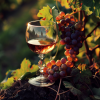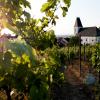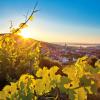What are the different types of wine tasting?
Wine tastings can have different formats and features. In this article, you will learn about the most common ones.
General Wine Tasting
Most of the regular tastings that winemakers offer on GoGo.wine belong to this category.
During a general tasting, they will pour you wines of various varieties, vintages and origins. It can be said that it is a tasting without fixed rules. But it is not quite like that. A certain sequence of wines is also important for a general tasting.
You should always start with light varieties such as sparkling wine or rosé, followed by lighter white and heavy red wines. In other words, the dry wines come at the start, followed by semi-dry, semi-sweet and finally sweet. The higher the proportion of sugar, the later you get to it. It is also true that you sually move from the youngest wine to the oldest.
You can taste the wines through guided or unguided tasting. A guided tasting is led by a sommelier who will gradually introduce you to a selected number of samples. He or she talks about the wine while the waiter pours it for you. After tasting it, sometimes together with you, the sommelier evaluates it and moves on to the next one.
An unguided tasting is often part of some other event. "Tasters" come to the sommelier in a reserved area and he pours them individually and talks about the wine.
Horizontal Wine Tasting
In a horizontal tasting, you will focus on wines from a single year. They come from the same variety and region, but have different producers and thus possibly different production methods. For example, you can compare Cabernet Sauvignons from 2008 this way.
Horizontal tasting will help you discover how different terroirs and their climatic conditions, soil or winemaking methods, which sometimes differ only in small details, affect the taste, aroma and color tones of the same type of wine.
During a horizontal tasting, you can focus on wines in a more narrowly defined area, for example you will test the aforementioned Cabernet Sauvignons from 2008 from winemakers in the Rača terroir. But the location can also be expanded, you can focus on the whole world and taste Cabernet from Tuscany, Bordeaux or the Napa Valley.
Vertical Wine Tasting
Think of vertical tasting as a journey through time, through the history of one wine. During it, you will focus on one variety, for example Devín, which was produced in one winery in different years.
The longer the winery has been producing wine, the better, as you have a wider variety of vintages to choose from. Imagine that you are comparing decades-old wines, already aged, with contemporary, freshly bottled ones.
The greater the time difference, the more it will show how the wine ages and develops over time. You will discover how the variety was influenced by, for example, climatic conditions, which were slightly different every year. Changes will also be shown in the winery, which may have modernized, slightly changed procedures or is now using oak barrels instead of barrels.
Wine Tasting in the Dark
Wine tastings are becoming more and more popular. Wineries and cellars are trying to attract more people to them, perhaps even those who do not consider themselves great winemakers. They come up with ideas on how to revive classic tastings.
One of them is tasting in complete darkness. It is based on the assumption that if you cannot use your sight, it will sharpen your other senses, and you will enjoy the taste and aroma of the wine much more intensely. The experience will be enhanced by the fact that these tastings take place not only in the dark, but also in unique spaces. Tasting in the dark at GoGo.wine is also offered by Bratislava's Historical Cellar for Tastings in the Dark.
Online Wine Tasting
In times when we couldn't meet and go to businesses, some came up with options to enjoy popular activities in an online environment as well. From behind the screen, we could also take a trip to the world of wine. Despite the fact that winemakers have reopened their cellars, online tastings have remained popular. Even now, some people appreciate the possibility of tasting in the comfort of their own home, without the need to move somewhere and think about who will drive.
How does online wine tasting work? You agree on the day and time with the organizer, including what types of wine you want to try. They will deliver it to your home along with instructions on how to store and refrigerate it. At the agreed time, you will then, via the selected online platform, "meet" the sommelier, who will guide you through the experience.























